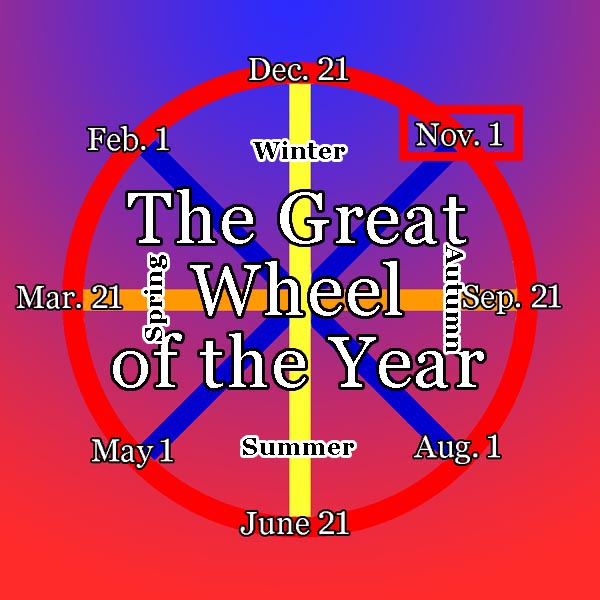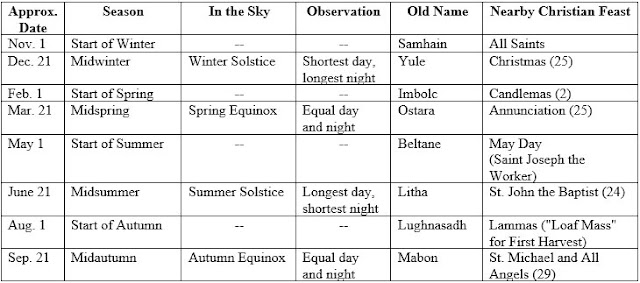 |
| KEY: Yellow = solstices; Orange = equinoxes; Blue = cross quarter days |
Click to see Vol. I, Issue 1 of the newsletter in which this article first appeared.
Listen to the audio of this article!
Today, November 1st, is the Feast of All Saints, and our feature article looks at a local celebration of that festival: The Mexican Dia de los Muertos, or Day of the Dead!
But before we talk about All Saints', Hallowe'en, and the Dia de los Muertos, let's take a brief look at the Great Wheel of the Year.
Ancient people of many cultures recognized certain celestial phenomena, including the shortest and longest days of the year: the winter and summer solstices, taking place around December 21 and June 21, respectively. (The dates I'm using apply to the Northern Hemisphere.) Halfway between these points, many cultures also recognized the point when day and night were roughly equal: the spring and summer equinoxes, around March 21 and September 21.
And, between these, a few cultures paid attention to the "cross quarter days," around the start of November, February, May, and August. In ancient reckoning, these days marked the beginning of the seasons. If winter solstice was the shortest day, than the six weeks or so before and after it were the shortest days: the season of winter, and of the dead.
Hallowe'en as we know it, then, was based on one such celebration, called Samhain (and pronounced SAW-winn). It was a time to recognize the thinness of the veil between the living and the dead.
We'll look more closely at the other holidays in the Wheel as they come, but here's a brief table:
PRACTICE:
This article continues with El Dia de los Muertos. You will find vocabulary practices and questions for this article and that one at the end of that page.



Please leave a comment - I can't WAIT to hear from you!